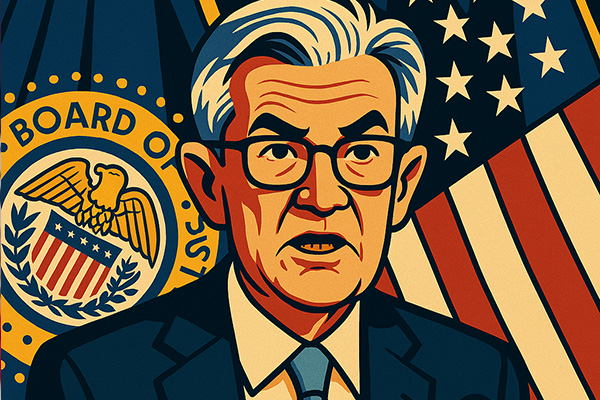
Powell Hints at Rate Cut in Jackson Hole Speech; Markets React Boldly
Jackson Hole, Wyoming — August 22, 2025.
Federal Reserve Chair Jerome Powell delivered what may be his final Jackson Hole address—folded into a delicate dance between cooling labor markets, stubborn inflation, political pressure, and evolving Fed strategy. Although he stopped short of an explicit commitment, Powell’s remarks tipped the scales toward a potential rate cut already slated for September.
“Shift in Balance of Risks” Signals Caution—and Optimism
Delivering a line investors were watching intently, Powell stated that a “shift in balance of risks may warrant adjusting our policy stance.” That phrase sparked an immediate response: U.S. equities rallied, and notably, Bitcoin surged to $114,000, highlighting the market's eagerness for easing. :contentReference[oaicite:2]{index=2}
Market Mood Swings in Real Time
The speech jolted investor sentiment: futures briefly surged, and volatility indicators rose. While optimism was tempered by lingering concerns over inflation and political uncertainty, Powell’s dovish tilt nonetheless momentarily buoyed the market.:contentReference[oaicite:3]{index=3}
Labor Market: Balanced But Fragile
Powell acknowledged that employment remains near maximum capacity despite weakened monthly job growth of about 35,000—a stark slowdown from 168,000 in 2024. The unemployment rate remains low at 4.2%, but Powell warned that if balance shifts too abruptly, layoffs could follow.:contentReference[oaicite:4]{index=4}
Inflation Dynamics and Tariff Impact
Persistent inflation still pressures the Fed. Powell referenced rising costs due to tariffs affecting goods prices, with core PCE climbing 2.9% annualized. Yet he framed these as possibly transitory, particularly in a context where wage pressures appear modest.:contentReference[oaicite:5]{index=5}
New Monetary Framework: Strategy for Stability
Powell unveiled a revised monetary-policy framework from the Fed’s five-year review. Major changes include dropping the emphasis on the effective lower bound (ELB), Removing “shortfalls” language around employment, and anchoring inflation expectations more firmly—while acknowledging that employment may exceed estimates without triggering inflation.:contentReference[oaicite:6]{index=6}
Data-Driven Caution, Not Commitment
Despite the dovish undertones, Powell tempered expectations. He reaffirmed the Fed’s reliance on incoming data before shifting policy, signifying that rate decisions remain conditional and not predetermined.:contentReference[oaicite:7]{index=7}
Political Pressure and Legacy Considerations
Powell’s remarks come amid tension with the Trump administration, which has been vocal in demanding cuts and calling for resignations. Facing intense scrutiny, Powell appeared to reassert the Fed’s independence while signaling that easing might be necessary—especially amid weak job numbers and external pressures.:contentReference[oaicite:8]{index=8}
Looking Ahead: September in Focus
The market now prices in approximately a 70–85% probability of a 25-basis-point cut at the next FOMC meeting with more easing expected through year-end. However, future action hinges squarely on August inflation and jobs data—these numbers could either confirm markets’ hopes or leave them wanting.:contentReference[oaicite:9]{index=9}
Crypto Watch: Bitcoin Holds Its Ground (for Now)
Bitcoin traders anticipated high volatility. Before Powell spoke, BTC hovered near $113K with traders pricing in ±2% swings. While some expected a drop to $110K if Powell turned hawkish, others are betting on a surge toward $150K if rate cuts were hinted.:contentReference[oaicite:10]{index=10}